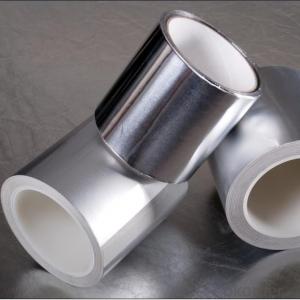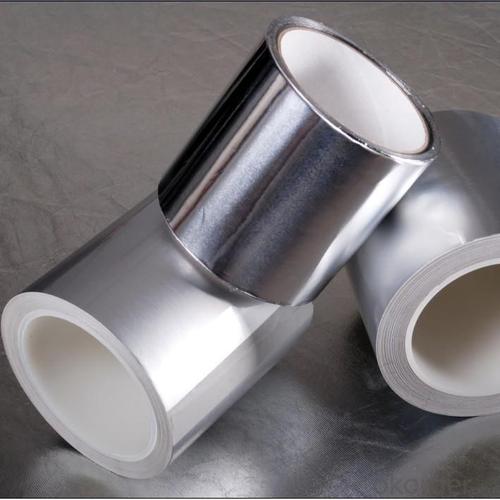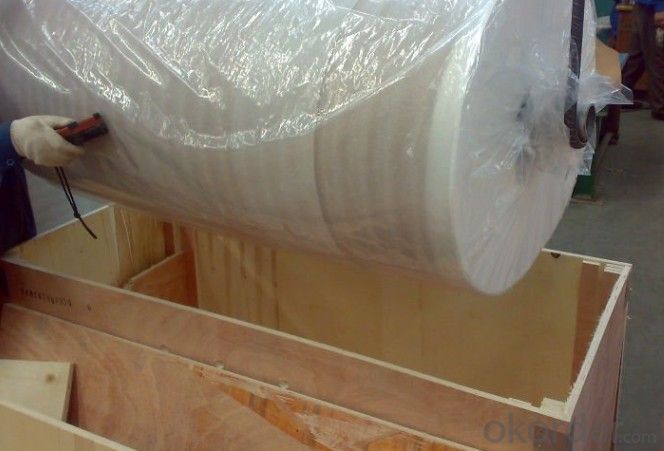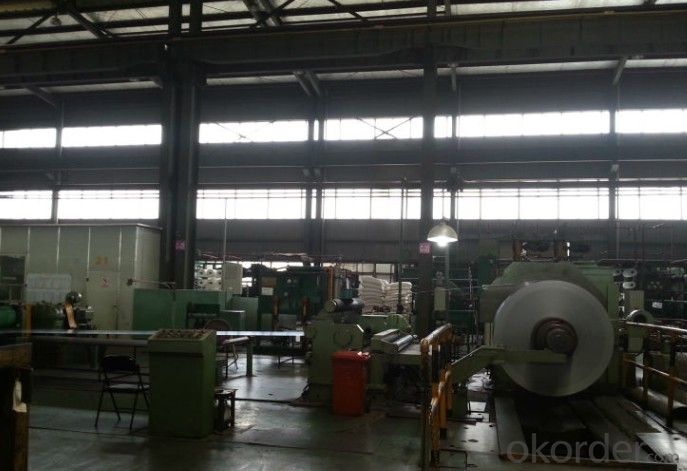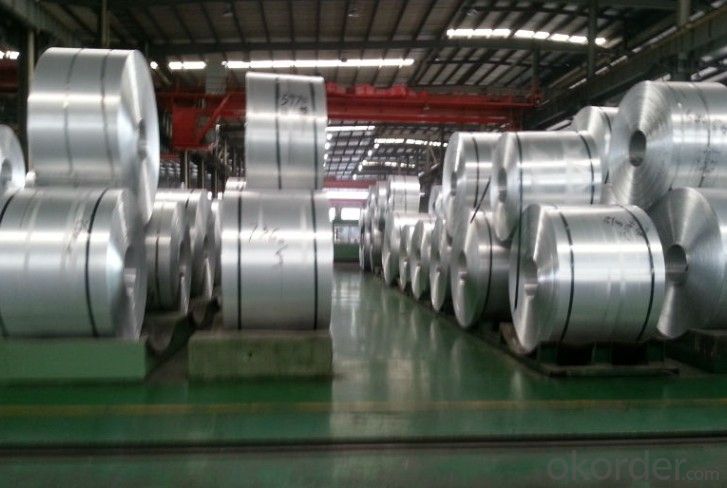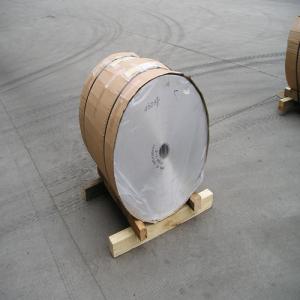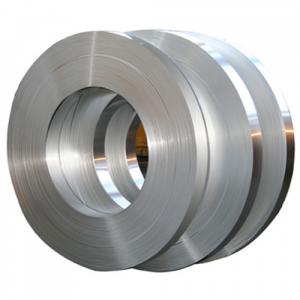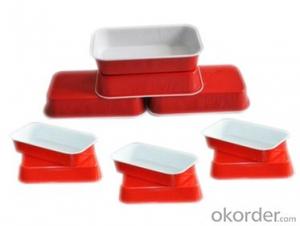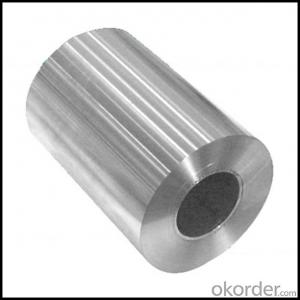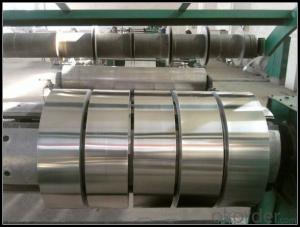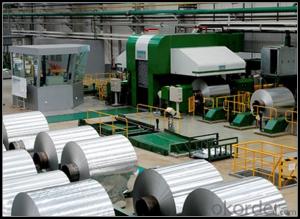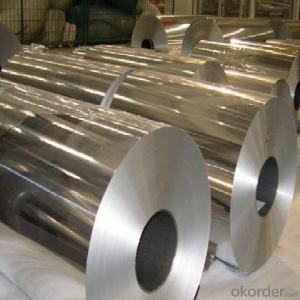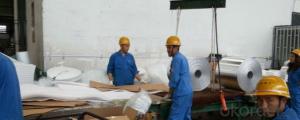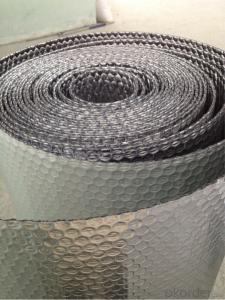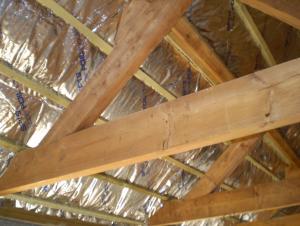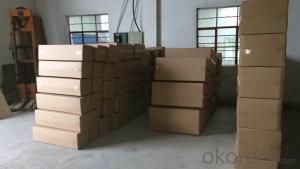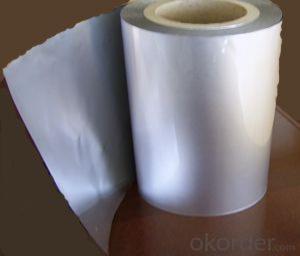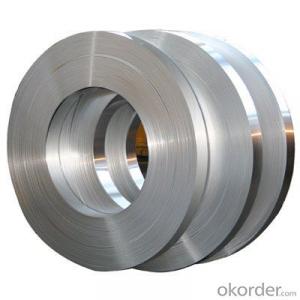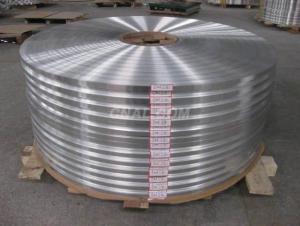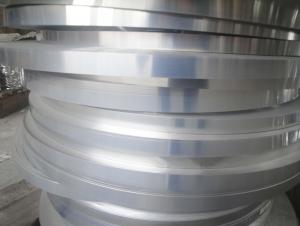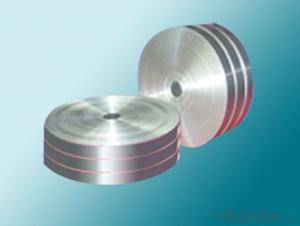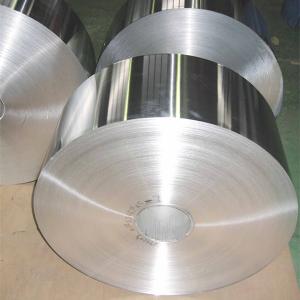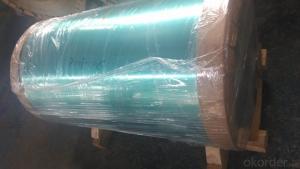Aluminum Flat Strips Al+LDPE Insulation Mylar and Bubble Foil Mylar Film
- Loading Port:
- Shanghai
- Payment Terms:
- TT OR LC
- Min Order Qty:
- 32 m²
- Supply Capability:
- 50000000 m²/month
OKorder Service Pledge
OKorder Financial Service
You Might Also Like
Specifications
Features high peel adhesion with good tack, temperature and aging resistance, and water vapor resistance
Aluminum Foil Tape Features:
1) High tensile strength aluminum foil made from special aluminum
alloy, coated with aggressive solvent-based acrylic adhesive,
which provides high peel adhesion and quick sticking
2) Designed for sealing joints and seams of foil jacketing in
air-conditioning duct work
Specifications:
1) Foil thickness: 18, 22, 26μ
2) Roll width: 48, 50, 60, 72, 75, 96, 100mm
3) Roll length: 27, 30, 45, 50m
4) Log roll: 1.2 x 45m, 1.2 x 50m
5) Jumbo roll: 1.2 x 1200m, 1.2 x 1000m
Inner packing:
Cut roll: printed core and shrink wrapping
Log roll: cardboard wrapping
Jumbo roll: plastic film + corrugated board wrapping
Outer packing:
Cut roll: carton
Log roll: carton + pallet / wooden case
Jumbo roll: wooden case
Aluminum foil tape has many uses in the electrical, HVAC and construction industry. It can be used in
the jobs requiring moisture and chemical resistant, thermal conductivity, flame resistant, heat and
light reflectance, and weatherability. There are several different styles of tape avaiable. Including
acrylic adhesive, line-less, polymer coated and flame resistant aluminum glass tape.
Foil tape with an acrylic adhesive is used for sealing off vapors in fiberglass duct board, sheet
metal ducts and FSK systems, It is ideal for use in HVAC systems. Due to its high tack cold weather
acrylic adhesive, which helps it to adhere well, even in periods of low temperature and high humidity.
- Q: This question asks for a comparison between two types of siding materials: aluminum and steel. It seeks to understand the distinct characteristics that set these two materials apart.
- <p>Aluminum and steel siding are both popular choices for exterior cladding, but they have several differences. Aluminum is lightweight, corrosion-resistant, and requires minimal maintenance, making it ideal for coastal areas. It also comes in a variety of colors and finishes. Steel siding, on the other hand, is more durable and can withstand harsh weather conditions. It is heavier and stronger than aluminum, but it may require more maintenance, such as painting or coating to prevent rust. Steel is also more energy-efficient due to its insulating properties. Both materials offer different benefits and are suitable for different applications based on the climate, design preferences, and budget.</p>
- Q: Is it possible to join aluminum strips together through welding?
- <p>Yes, aluminum strips can be welded. Welding aluminum requires specific techniques and equipment due to its high thermal conductivity and reactivity. Common methods include gas tungsten arc welding (GTAW), also known as TIG welding, and gas metal arc welding (GMAW), or MIG welding. These processes involve using a filler material and an inert shielding gas to prevent oxidation. Proper preparation, such as cleaning the aluminum surface and controlling the heat input, is crucial for a successful weld.</p>
- Q: What benefits are associated with the use of aluminum strips on the exterior walls of buildings?
- <p>Aluminum strips for exterior walls offer several advantages, including durability, resistance to corrosion and weathering, and low maintenance requirements. They are lightweight, which can reduce the load on the building structure. Aluminum strips also provide excellent heat insulation properties, contributing to energy efficiency. Additionally, they can be easily shaped and bent, allowing for versatile and modern architectural designs. The recyclability of aluminum makes it an environmentally friendly choice, and its non-combustible nature enhances safety in construction.</p>
- Q: Is it possible to utilize aluminum strips for creating decorative patterns or designs on the exterior of buildings?
- <p>Yes, aluminum strips can be used to create patterns or designs on building exteriors. They are lightweight, durable, and resistant to corrosion, making them ideal for outdoor applications. Aluminum strips can be cut, bent, and shaped into various forms to create intricate designs and patterns. They can also be anodized or painted to achieve different colors and finishes, enhancing the aesthetic appeal of the building's exterior.</p>
- Q: Is it possible to use aluminum strips as a material for insulating a building?
- <p>Aluminum strips are not typically used for building insulation. Insulation materials are designed to resist heat flow, and aluminum is a good conductor of heat, which means it would not effectively insulate a building. Common insulation materials include fiberglass, cellulose, and foam, which are poor conductors of heat and can effectively reduce heat transfer. Aluminum strips might be used in construction for other purposes, such as reinforcement or as part of a vapor barrier, but not for their insulating properties.</p>
- Q: Is it possible to utilize aluminum strips in a construction project focused on sustainability and environmental responsibility?
- <p>Yes, you can use aluminum strips for a green building project. Aluminum is a versatile and sustainable material due to its recyclability and low energy consumption in production. It also has a high strength-to-weight ratio, which can contribute to the energy efficiency of a building. However, it's important to consider the source of the aluminum and ensure it is produced with minimal environmental impact. Using recycled aluminum can further enhance the green credentials of your project.</p>
- Q: 1060 what is the hardness of aluminum strip?
- Brinell hardness measurement method is to use a hardened steel ball, such as the diameter of 5 mm steel ball, with a certain force into the parts or material surface, and then measure the indentation size, read the hardness value.
- Q: What are the various types of waterproofing materials that utilize aluminum strips in their composition?
- <p>Aluminum strips are used in several types of waterproofing materials due to their durability and resistance to corrosion. Some common types include: 1) Aluminum Foil Tapes: These are adhesive tapes with an aluminum foil backing, used for sealing joints and seams. 2) Aluminum Coated Fabrics: Fabrics coated with aluminum to provide a barrier against water and UV rays, often used in construction and roofing. 3) Aluminum Flashing: Sheets of aluminum used to cover joints and intersections in roofing and walls to prevent water infiltration. 4) Aluminum Waterproofing Membranes: These are flexible sheets that can be applied to surfaces to create a waterproof barrier. 5) Aluminum Coated Self-Adhesive Sheets: These are sheets with a self-adhesive backing and an aluminum coating, used for sealing and waterproofing applications. Each type serves specific waterproofing needs and is chosen based on the application and environmental conditions.</p>
- Q: Is it possible to use aluminum strips as a material for the exterior siding of a building?
- <p>Yes, aluminum strips can be used for exterior siding. They are known for their durability, resistance to weather, and low maintenance requirements. Aluminum siding is lightweight, easy to install, and comes in various styles and colors, making it a popular choice for both residential and commercial buildings. It also has a long lifespan and can be recycled, adding to its environmental benefits. However, it's important to ensure proper installation and choose high-quality materials to maximize its performance and longevity.</p>
- Q: What specific cleaning techniques should be employed for maintaining an aluminum strip roof?
- <p>When cleaning an aluminum strip roof, it's important to use gentle cleaning methods to avoid damaging the metal. Use a soft brush or broom to remove debris and avoid using abrasive tools that could scratch the surface. For cleaning solutions, opt for mild detergents mixed with water, and avoid harsh chemicals that could corrode the aluminum. Always rinse thoroughly to remove any residue. Never use high-pressure water or steam cleaners, as they can cause dents or warp the aluminum. Regular maintenance, such as checking for and sealing any leaks, will also help prolong the life of your aluminum strip roof.</p>
Send your message to us
Aluminum Flat Strips Al+LDPE Insulation Mylar and Bubble Foil Mylar Film
- Loading Port:
- Shanghai
- Payment Terms:
- TT OR LC
- Min Order Qty:
- 32 m²
- Supply Capability:
- 50000000 m²/month
OKorder Service Pledge
OKorder Financial Service
Similar products
Hot products
Hot Searches
Related keywords
